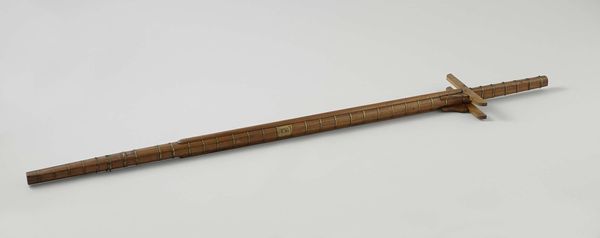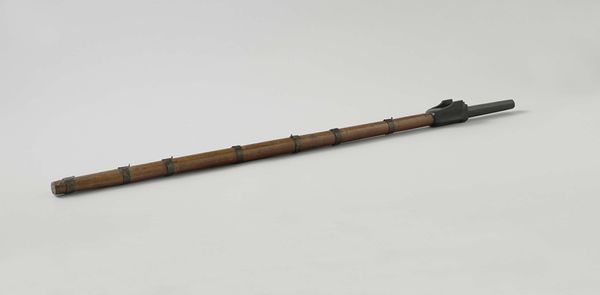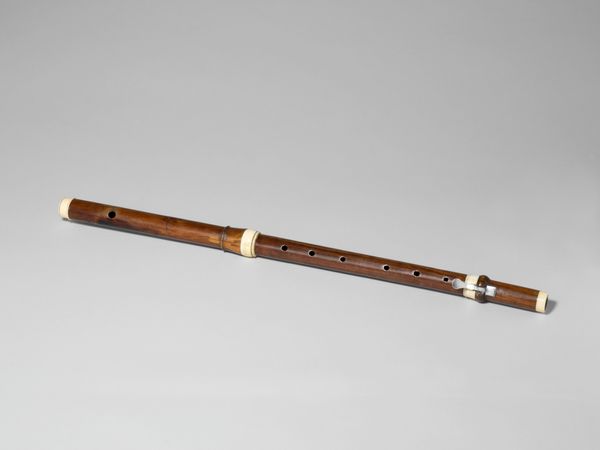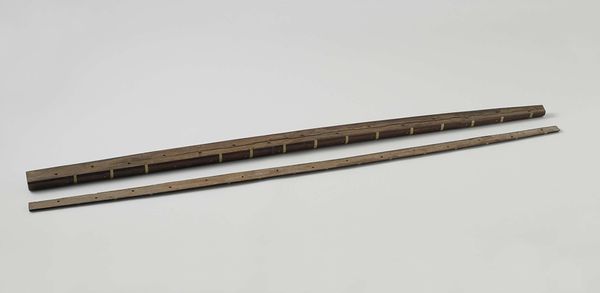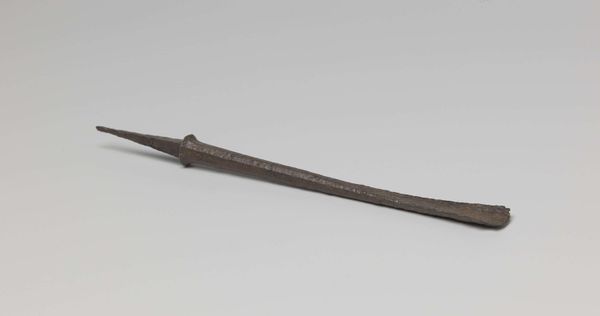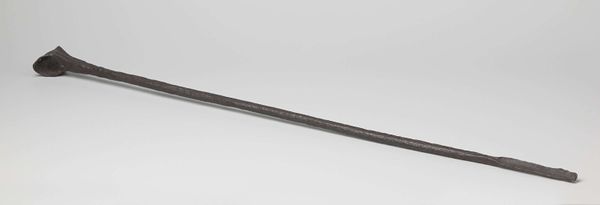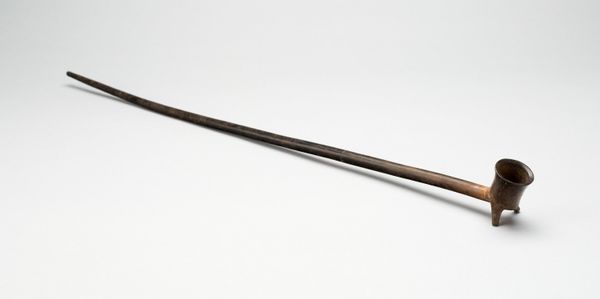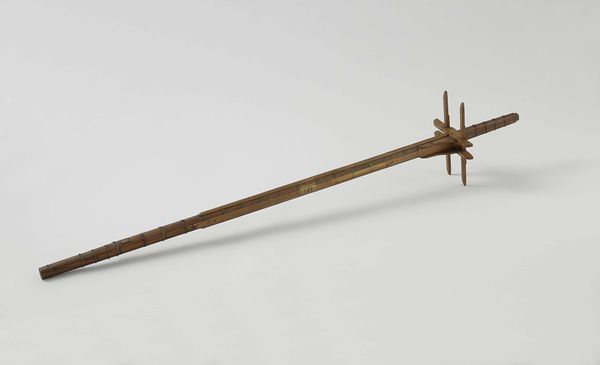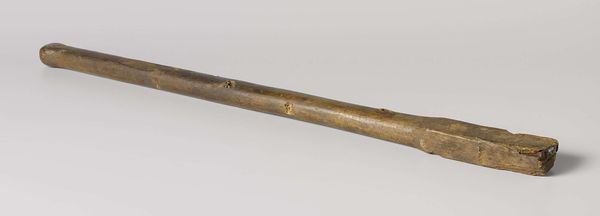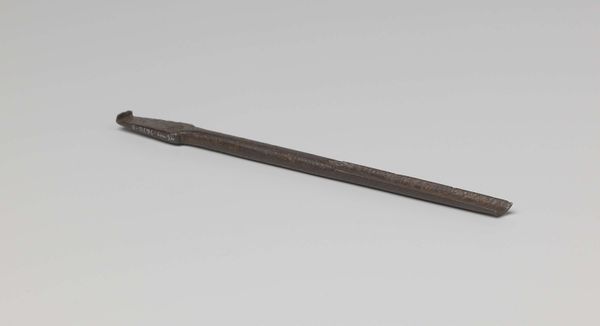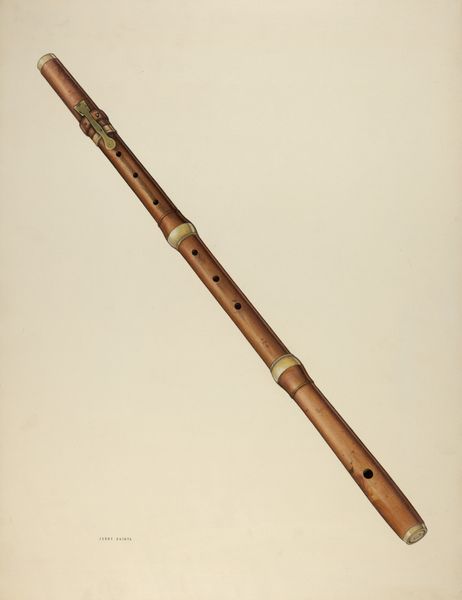
mixed-media, assemblage, metal, sculpture, wood
#
mixed-media
#
assemblage
#
metal
#
geometric
#
sculpture
#
wood
#
history-painting
#
realism
Dimensions: height 166.3 cm, length 25.2 cm, width 5.4 cm
Copyright: Rijks Museum: Open Domain
Curator: Well, let's take a closer look at this intriguing object. What we have here is an early 19th-century "Model of a Made Mast," created around 1821 by an anonymous artist. The materials consist of wood, metal, and other mixed media, presented as an assemblage. Editor: It strikes me as incredibly austere, almost ascetic. The linear, repetitive elements coupled with the raw, muted color create a sense of deliberate constraint, don't you think? It evokes images of labor, restraint, and the harsh realities of maritime life. Curator: I'd agree that it seems very functional, indeed. These models would have been of enormous use to naval officers or shipbuilders, but even to naval historians it provides insight into early ship building methods. One cannot underestimate how socio-political and cultural the construction of these masts and ships really were. They represent entire power structures on a single boat. Editor: Precisely! Consider, then, how labor and capital, exploitation, and empire are all bound together in a "simple" object. It embodies, quite literally, the framework that held colonial power aloft and facilitated exploitation across vast distances. Even its realism underscores the intention. It is about demonstrating a clear relationship with the actual historical object. Curator: I see your point. It’s interesting to view this miniature model not just as a feat of engineering, but as a three-dimensional archive, embodying all of those complex histories. One must remember how art, even applied art, so often participates in larger historical currents and systems of power. The image of a seafaring society, with the good and bad associated to it. Editor: Absolutely. This model becomes more than just an object; it becomes a silent testament to complex power dynamics and historical inequities. The labor required and lost on the seas comes back to haunt us. Curator: Thank you, it's been enlightening to see this model in this new way, from an unexpected and needed vantage point. Editor: Indeed. It's objects like these that can challenge our perceptions and inspire critical dialogue around broader historical narratives.
Comments
No comments
Be the first to comment and join the conversation on the ultimate creative platform.
